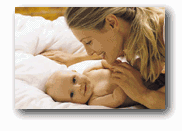Basics Things You Need To Know
Changing diapers is probably not the most wanted job for moms and dads but somebody has to do it. It is not rocket science either as long as you remember a couple of basic things. Girls should be wiped front to back to avoid getting urinary infections. For boys, you can avoid an unexpected “sprinkling” by placing a diaper or towel over his penis after you remove the dirty diaper since it’s not unusual for boys to spray their parents during diaper change. No lotion or powders are needed unless your baby has diaper rash. If diaper rash occurs, changes should be frequent and, whenever possible, allow the skin in the diaper area to “air out”. A zinc oxide ointment or petroleum jelly or special diaper rash cream is advised for diaper rash, but if it doesn’t improve, you doctor might recommend a stronger medication.
Disposable or cloth?
One of the first decisions you’ll make in caring for your baby is what kind of diapers to use. You have two choices: disposable and cloth.
Disposable diapers
Disposable diapers come in different sizes that are designated by the weight and the age of the baby. Wetness is soaked into the diaper’s layers, keeping the baby’s bottom drier and less susceptible to irritation. They are fastened with tape or Velcro strips attached to the back panel that fasten in the front.
Soiled disposable diapers should be folded in on themselves and disposed of in your trash or in a special diaper dispenser. Most day-care centers require disposable diapers because they’re more convenient to use and dispose of.
Disposable diapers are available at grocery and discount stores. Using disposable diapers is more expensive than using cloth diapers.
Baby Have a rash? See our Diaper Rash Decoder
Cloth diapers
Cloth diapers come in woven cotton, terry cloth, or flannel and can be bought unfolded or prefolded in different thickness. Cloth diapers are usually fastened with safety pins. You also can buy Velcro-fastening cloth diapers or diaper covers designed to hold the diaper in place. With cloth diapers, wetness stays next to your baby’s bottom, which may cause irritation. Cloth diapers are available at department and discount stores. Another alternative is a diaper service, which may provide convenient home delivery of clean diapers and pickup of soiled diapers. Cloth diapers you launder yourself are the least expensive choice. Diaper services are a more costly option.
To clean a soiled cloth diapers you need to rinse it in your toilet, and then machine wash it in hot water separately from other items. In between laundering, soiled diapers can be kept in a diaper pail. Flushable liners are available for cloth diapers and can make cleanup much easier.
Discuss the option of using cloth diapers at your day-care center. In-home care providers may be more agreeable to using cloth than centers can be
Environmental considerations
There are environmental pros and cons on both diapers, disposable and cloth. Self-laundering and diaper services both use water and electricity to clean diapers; disposable diapers add to the garbage that’s deposited in our landfills.
What is the best option for your baby?
There’s no one right answer for this question. Choose what’s best for your baby, your family, and your schedule. Whichever you choose, you may want to have some cloth diapers on hand to use as burp cloths and impromptu bibs.
Baby Have a rash? See our Diaper Rash Decoder
How to become an expert in changing diapers?
Nobody is an instant expert at diapering. Also every baby has his own opinion about the whole process: Some will lie still, some will wiggle, some will kick and scream–and most will do all three. Here are some tips to make diapering a little bit easier.
- Bond with your baby. You spend a lot of time with your baby on the changing table, so why not make it fun for both of you. Changing your child’s diaper is a great opportunity to touch, talk, and connect.
- Be prepared. Organize baby’s clean diapers, diaper pail, wipes, and ointments within easy reach
- With boys, watch out. To avoid being splashed if your baby boy starts to urinate while you’re diapering him, place a soft cloth over his penis until you can get the diaper positioned correct.
- Disposable diapers: Go for a snug fit. When fastening a disposable diaper, make sure it’s not too tight. You don’t want to constrict your baby’s tummy. But left too loose, even the most expensive elasticized disposable will leak.
- Cloth diapers: Secure the diaper with safety pins. To prevent a pin from sticking your baby, keep your fingers between the pin and baby’s skin–better that you get stuck than baby. And always check the pin to make sure it is securely locked. Add protective plastic or nylon pants or a diaper cover for added security and waterproofing.
Diapers and swimming
Say “no” to ordinary diapers when it comes to playtime in the swimming pool. Diapers are for protection, not swimming. They will quickly absorb water and become too heavy and also pose a sanitary problem. Select a baby swimsuit or disposable diapers that are specially designed for swimming.
|
.
|
||||||||||||||||
